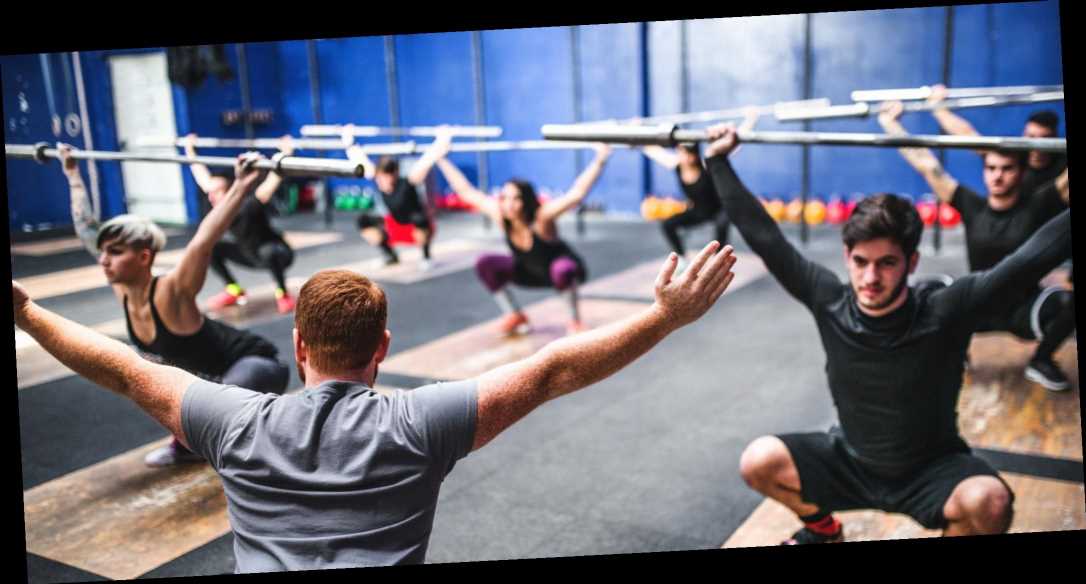There’s nothing worse than being injured. While you’d rather be hammering through a WOD at the CrossFit box or tackling a long run come Saturday morning, you’re confined to an altered routine that involves a whole lot of Netflix and complain.
When you do ease back into working out, the last thing you want to do is draw extra attention to whatever’s been acting up. Cue the dreaded instructor question: “Does anyone have any injuries I should know about?”
You stand there, like a deer in headlights. Not wanting to tarnish your cool-guy image by raising a hand in front of the rest of your fellow sweat hunters, you proceed as if it’s business as usual. And that’s where you’ll really put yourself in harm’s way.
Injuries aren’t just something you should ignore, says Charlie Meredith, an instructor at Barry’s Bootcamp. “The last thing you want is to make matters worse,” he tells Men’s Health. “Speaking up can make you feel more successful in your workout.”
So what should you really be doing in this situation? And how can you handle anything else that could put you in an uncomfortable position once class gets going, like an overzealous instructor putting you in harms way? We talked to experts to get the lowdown of navigating injury and avoiding further on the bench—no risking that cool-guy image required.
Peter MullerGetty Images
1. Speak up before class gets going.
Not like, when prompted when everyone else is in the studio. Instead, do yourself a favor and get there a smidge on the early side, suggests Katherine Mason, founder and CEO of Sculpthouse.
“Arrive to class a few minutes early to discuss the issue with your instructor before other people pile in,” she says. “They should consider your injury with their class program and offer a different move when necessary.”
2. Don’t be afraid to look for additional guidance during class.
If you don’t know how to modify a certain move to tailor to your injury or condition, that’s okay. That’s why you’re paying to go to a facility where there is an expert in charge. Lean into them for their skill set.
“There is nothing wrong with seeking out help from your instructor as the time goes on,” says Mason. “They are there to make sure you’re getting a safe and effective workout, and the best ones make you feel like you are getting a personal training session in a group class.”
3. Understand that there is a big difference between discomfort and pain.
When you’re moving your body in a different way than you may have been doing before, things are going to take some getting used to. While moves may push you a little outside of your comfort zone, that doesn’t mean that they’re bad for you.
Listen to your body, and proceed with caution. “If something is painful, stop immediately and/or modify,” says Meredith. “Be your own best advocate. It’s your body, and you know it better than anyone else.”
4. It’s OK to be skeptical.
You have paid good money for a class, so don’t be afraid get the most out of it. This means that if the instructor cues up something during class that makes you feel unsure, it’s okay to be unwilling to take their instructions at face value. “Your workout should make you feel great during and after class,” says Mason. “If you don’t feel comfortable at any time during a class, then feel free to sit a certain move, modify it yourself, or politely excuse yourself from class.”
If a certain cue really gets under your skin, either approach an instructor about it after the workout’s done, or feel free to raise it to the attention of a studio manager—as long as you do it in a polite way.
“Your instructor wants you to be good, and should be comfortably addressing your concerns,” says Mason. “They can talk to you about why they cued this way, then offer a modification so that you keep coming back, have a great experience and stay injury-free.”
5. Give yourself permission to look elsewhere.
Remember: We’re learning every day. Maybe your go-to workout isn’t the ideal method to load up on endorphins while you’re dealing with a specific injury. Think of this as an opportunity instead of a hassle, where you can try other things and get exposure to other sweat styles. Reap the benefits of a different modality, and you might even open up yourself to new possibilities and make some new friends in the process.
Source: Read Full Article

